Memories
- gcgegg91
- Jan 24, 2022
- 6 min read

There exists a sailing superstition where nailing a horseshoe upright to the base of your mast will help to ward off storms when setting out to sea.....
I placed the carabiner in this image at the base of my mast to pay homage to this tradition. It was given to me by my father from his boat, Bangorang, and holds one of my favorite memories from our first blue water sail from Mexico to the Marquesas. The idea came to me because it is (roughly) horseshoe shaped and was made this way by the force of a squall that hit us one day out from our landfall on Hiva Oa. I wrote the blog post the next morning in our old sailblog site ( https://www.sailblogs.com/member/bangorang). Read on below:
"Well just when I thought we were in for a nice couple of days of sailing to reach the anchorage at Hiva Oa, the mother of all squalls sucker punched us right in the middle of the night..... We were cruising along just fine with a double reefed main and jib in 15 knots of wind all night and I settled in after my mid shift for a relaxing sleep. Shortly thereafter, I was woken up by my father knocking on the deck above me and yelling for me to "get out here!!!" As I threw on my lifejacket and foul weather gear I can hear the wind generator sounding like it was going to spin right off the boat and everything is getting thrown around in my cabin. Within 30 seconds of hitting the deck I was soaked all the way through to my skin. The only way to describe it was that it rained so hard and was so dark black, you could barely see the front of the boat even with lights. The wind was already at 35 knots (and building) and my dad shouts for me and Wendy to reef the jib while he tries to keep the boat facing downwind. We roll up the jib until there is barely enough of it out to cover a small twin bed. At this point the wind has peaked at 45 knots and the boat is getting a pretty gnarly thrashing. Ultimately, we went through 3 uncontrolled jibes and were completely unable to steer, so we did our best to round up and dad runs up to the mast base so him and I can attempt to get the mainsail down while Wendy drives. It says something for the fury of the squall that I could barely see him up at the mast even though he is only 15 feet away from me and has a light on him. After about 20 min of 30+ knot winds the wind started to die down to a more manageable 25 knots. It is still pouring but much smoother while we do damage control. To be honest, I am incredibly surprised that the mast did not get ripped off, or at least the boom. Upon inspection we found that the thing that saved us any serious damage was the preventer line attached to the back of the boom to keep it from accidently jibing. To describe the pressure that the boat was under we have included a picture of the damaged carabineer that got ripped off the deck. This clip is about 7 inches long of at least 3/8 inch thick steel that is rated to be able to handle loads up to 2400 kg (a little over 1000 lbs). This storm bent it like a paper clip..... All in all, it was a very eventful night and I am sure I speak for every one on the boat when I say we hope to see land tomorrow."
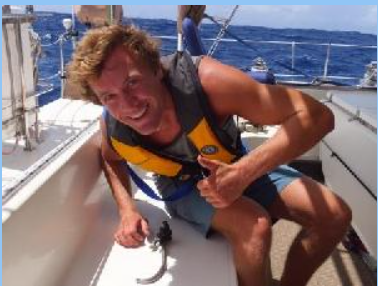
Pretty wild right? Squalls are a natural phenomenon that occur with increasing frequency the closer you get to the tropics. You can usually see them forming during the daytime, giant pillars of clouds condensing into one concentrated storm pocket on the horizon. They blow by with very forceful winds and a lot of rain, which usually causes them to show up on radar at night. As impactful as they can be, they usually only last for about 30 minutes before blowing past and/or over your boat.
In my experience blue water sailing, I learned pretty quickly that you can only really plan for the weather a few days out from land with any accuracy. When you are sailing for 2-3 weeks at a time offshore, no weather model on the planet will be able to guarantee what to expect. Even when avoiding the big storms, you can still get hit by these small and fast moving squalls, which can do a lot of damage to an unprepared boat. I think this is probably why the horseshoe superstition exists. Sailors grabbing any notion of safety and hope they can when they set off over the horizon.
Ultimately, I don't think that putting this symbol on my mast will ward off storms. What it will do is remind me every day of the power of the open ocean, and what my boat (and I) need to be ready to contend with. These are the forces that I need to make Te Ara ready to endure. Gnarly right? I've been asked multiple times if I was scared when caught in squalls or storms while sailing. My answer surprised even me the first time: I've only been in a few truly powerful storms/squalls, and yes they were moments of fear, but the scariest and hardest moment of all of my passages was just leaving the dock. Making the decision to commit fully to crossing an ocean. That is the terrifying moment. Once you are out there, the decision becomes easy: Sink or Swim.... literally. Make the choice to leave, prepare as best you can, and the rest is pretty simple. I can tell you this with absolute certainty: Looking back, I would rather be in the middle of a squall or in a south pacific storm than sitting behind a desk. I would make that choice every time.
Boat Work:
I've been looking at that carabiner for a week now and was very excited to share that story with you all. It has made me smile multiple times these past couple of days while I worked on Te Ara. But now, on to my favorite topic.... boat projects!!!
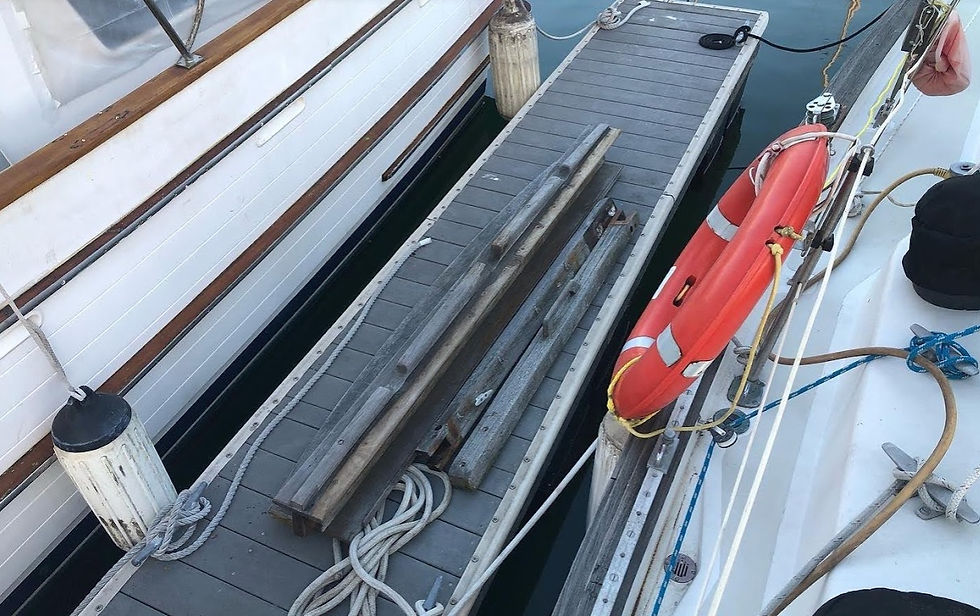
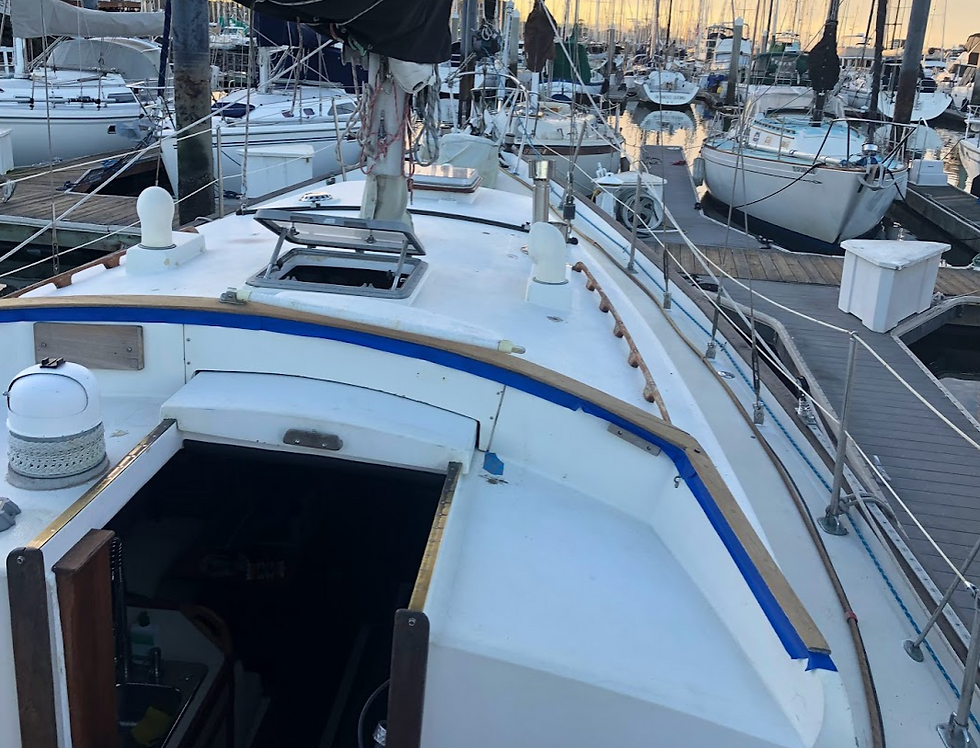
As you may have guessed from Instagram, I have been working a lot up on deck to re-vamp the cockpit. This included removing all of the old unnecessary teak and supports for the boom cradle and old dodger. I will be replacing this with a stainless steel dodger and new canvas in the coming months. The stainless steel should look nicer, weigh less, and require less maintenance over time.

For now, it made the next part of my job easier: I varnished all the remaining integral teak parts of the cockpit with TotalBoat Lust Varnish, which you can find with a quick search on Amazon. This stuff is great! Typically, varnishing requires a week or two of coating and sanding to build up a protective layer of varnish on fresh wood. The TotalBoat Varnish required no sanding and you can add up to 4 layers a day. This means that I was able to complete the whole job in just under 3 days! It helped that it was sunny and warm the entire time I was out there.
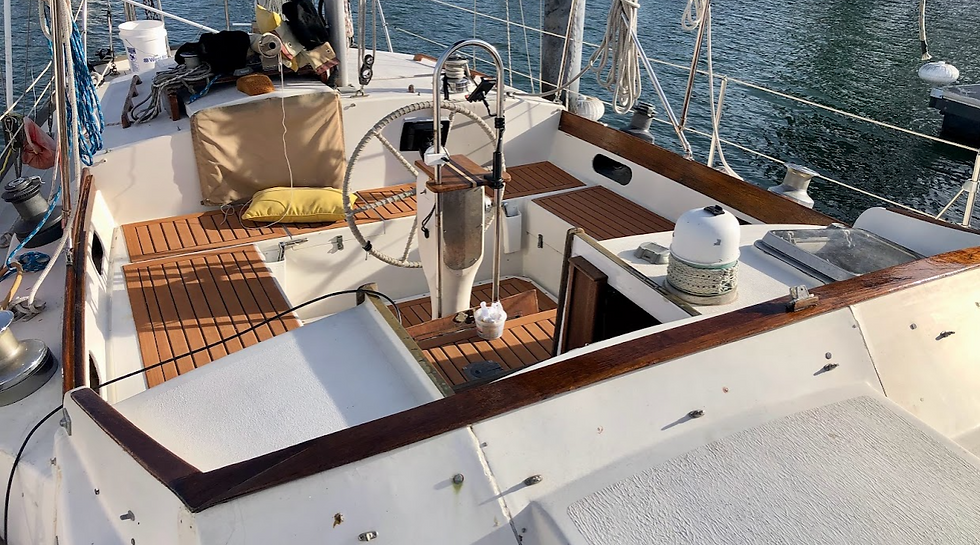
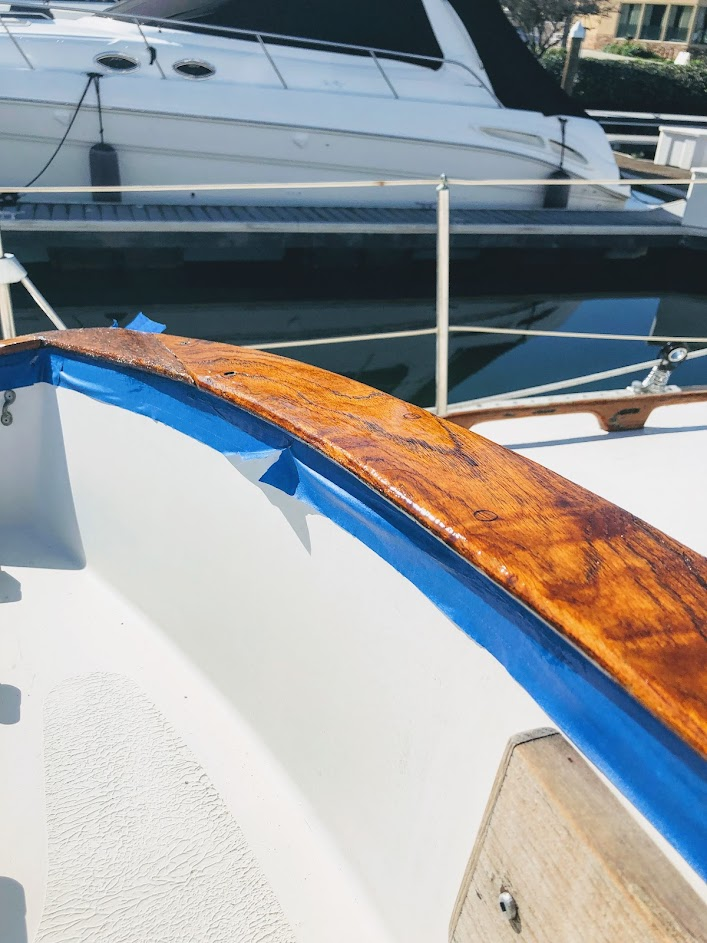
In addition, I was able to test out the windlass and remove the old anchors/switch around the anchor chains and locations. I had two Danforth anchors onboard, which is a bit unnecessary in my opinion. The one located on the stern was clearly an emergency anchor (think of it like an E-brake on a car). It was intended to be released overboard in case you lost control and were going to hit something, or as a stern anchor in a bow and stern harbor. I had its big brother up on the bow in addition to a plow anchor. I got rid of the smaller Danforth and moved the larger one to the stern in its position. If I need a Danforth as the bow anchor, it will be easy to move it up front and connect it to the second chain I have running from the anchor locker. The hardest part about this job was actually getting the old shackles off. They were old enough that they had seized up and started to warp when I used my wrench set to try and open them. I ended up having to cut through the shackles and chain with my angle grinder! it was a long weekend of lifting heavy anchors and chain, but worth it in the end for a better balanced and cleaned up ship.
That's all for now! Hopefully I will have a lot more to share with you in the next episode. McKay and I plan on heading out sailing this weekend. I will also start re-rigging the boat (both standing and running rigging) as well as installing a new stove down below (one that runs on propane). Stay tuned for more updates!
Fair winds and following seas.
-Te Ara


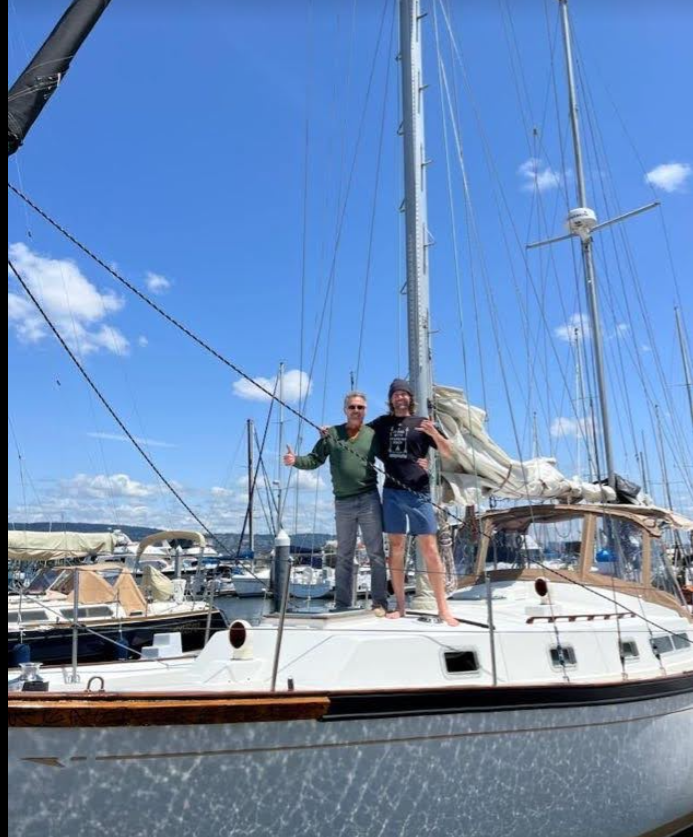

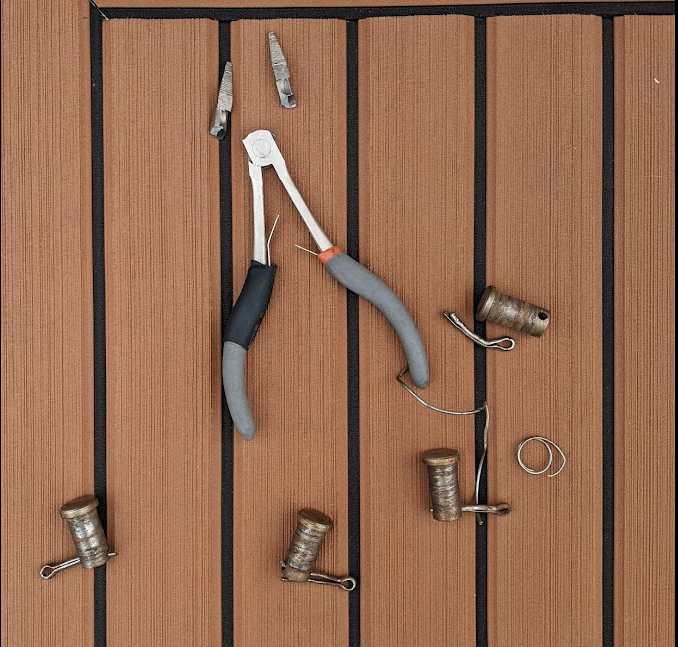
Horse shoes are always mounted “tips up“ so the luck doesn’t spill out! That leprechaun we saw in Ireland could have told you all about it 🍀